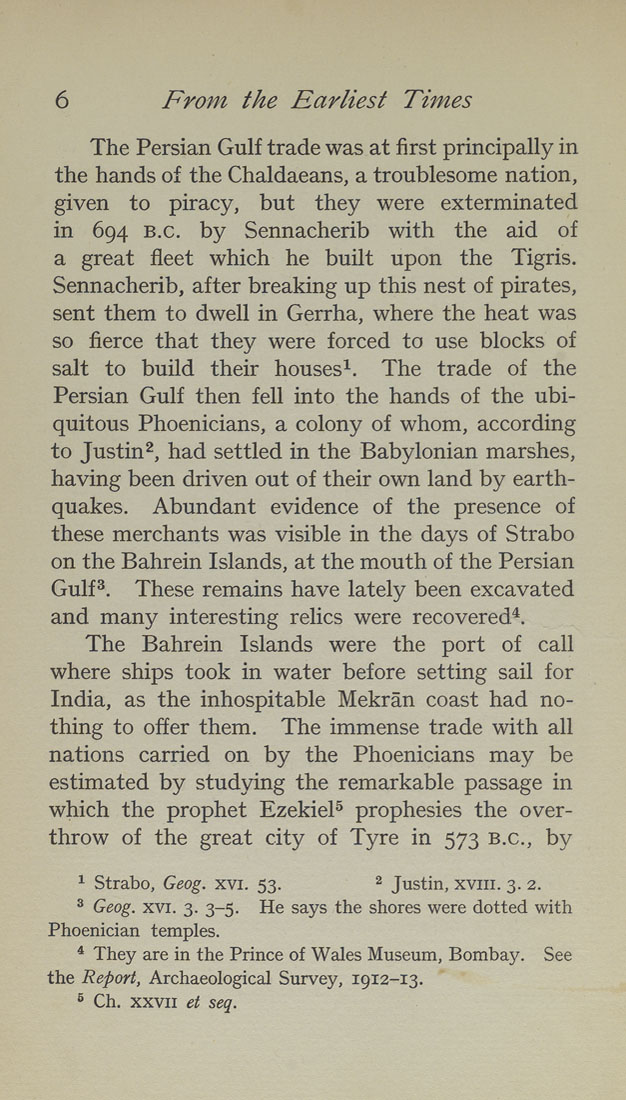6 From the Earliest Times
The Persian Gulf trade was at first principally in
the hands of the Chaldaeans, a troublesome nation,
given to piracy, but they were exterminated
in 694 B.C. by Sennacherib with the aid of
a great fleet which he built upon the Tigris.
Sennacherib, after breaking up this nest of pirates,
sent them to dwell in Gerrha, where the heat was
so fierce that they were forced to use blocks of
salt to build their houses^. The trade of the
Persian Gulf then fell into the hands of the ubi¬
quitous Phoenicians, a colony of whom, according
to Justin^, had settled in the Babylonian marshes,
having been driven out of their own land by earth¬
quakes. Abundant evidence of the presence of
these merchants was visible in the days of Strabo
on the Bahrein Islands, at the mouth of the Persian
Gulf ^. These remains have lately been excavated
and many interesting relics were recovered*.
The Bahrein Islands were the port of call
where ships took in water before setting sail for
India, as the inhospitable Mekran coast had no¬
thing to offer them. The immense trade with all
nations carried on by the Phoenicians may be
estimated by studying the remarkable passage in
which the prophet EzekieP prophesies the over¬
throw of the great city of Tyre in 573 B.C., by
^ Strabo, Geog. xvi. 53. ^ Justin, xviii. 3. 2.
^ Geog. XVI. 3. 3-5. He says the shores were dotted with
Phoenician temples.
* They are in the Prince of Wales Museum, Bombay. See
the Report, Archaeological Survey, 1912-13.
^ Ch. xxvii et seq.
|








